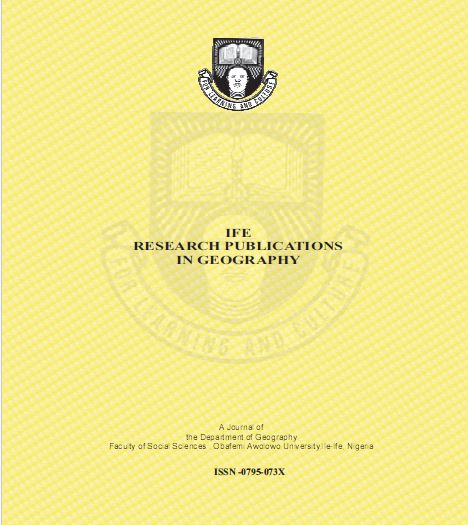Land cover response to changes in forest resources utilisation in South-Western Nigeria: GIS Perspective
Abstract
This study documents the extent of resource use and the level of degradation consequent upon land use with the aid of remote sensing and GIS technology. The study integrated a topographical map of 1969 and satellite imageries from Landsat MSS 1972, and Landsat TM 1991 and 2000 with ground truthing, fauna inventory and socio-economic surveys to assess changes in forest resource use and land cover in Oluwa Forest reserve, South-western Nigeria. The study area was demarcated on the map through gridding techniques which led to the selection of hundred quadrants were by adopting the table of random numbers. Digital image processing was carried out for satellite imageries. Land uses were identified and classified from the satellites imageries using ILWIS 3.4 software. Supervised classification was adopted and the maximum probability algorithm was used to classify the land covers in to the arable crop, tree crop, exotic tree plantation, dense forest and settlement/open space. Result shows that agricultural land uses which were non-existent in 1972 increased three folds from 8,176 hectares (4.43%)in 1991 to 112,172 hectares (60.72%) of the total land area in year 2000, while settlement increased by about six folds from 4932.6 hectares in 1972 to 30,911hectares (16.73%) in the year 2000. The study concludes that the advance of remote sensing technology offers improved accuracy of environmental monitoring and analysis.




